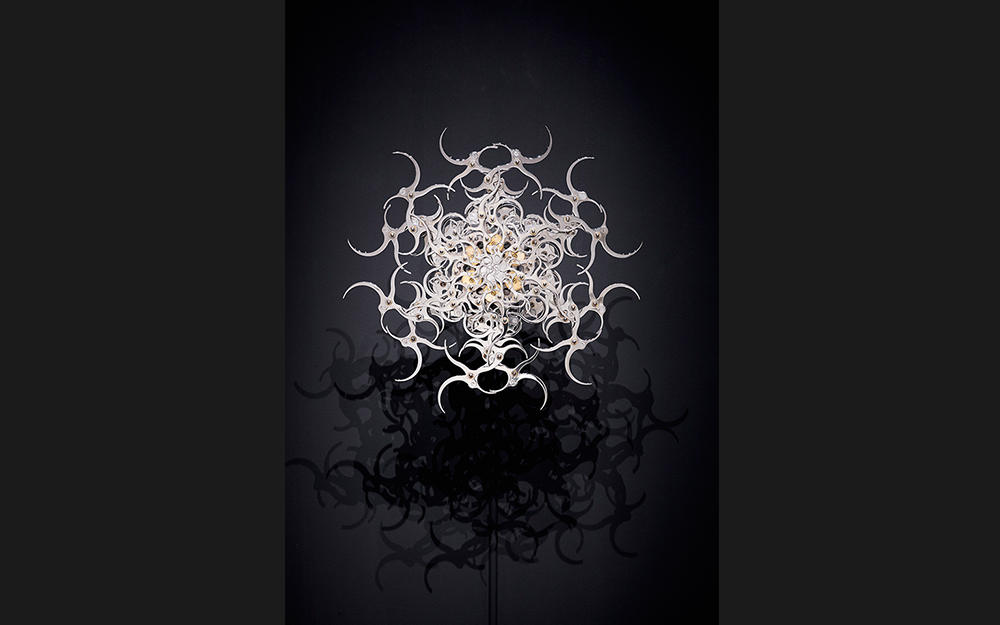Stroy
Cakra-2552-a
Cakra-2552-a was originated from the thoughts on the relationship between human beings and religion in general, which was the main interest of CHOE at that time. He was interested in the structure in which humans are dominated by other humans, and also the creation of any kinds of power structure in the name of the religion. The concept of this work is about moving Mandara. This time, CHOE didn’t add scientific name or narratives to the work as he did it to his previous works.
According to the U.R.A.M. report, when the earliest mechanical life form Cakra was discovered, it was in the form of a giant honeycomb. The movement of individual Cakra entities does not follow a systematic pattern, their irregular movements emit beams of light, illuminating when the Cakra opens, extinguishing when it closes, each entity mutually responding to one another’s movements, echoing its perceptions as if moving as one harmonious rhythmic construct. Derived from the Sanskrit word, the Cakra series was inspired from the Buddhist mandala. The Cakra are constructed from arc-shaped rotating metal parts, assembled with gears into a circular form. At first glance, it appears to resemble the exposed surface of a timepiece, and when the entire structure is revealed, it is as if the secrets of time has been unlocked, joining in the revolving dance of time. The quiet repetitive revolutions, steadily spinning, illustrate the cyclic nature of the universe. Cakra expresses the inner reflection and meditation of the multi-faceted universe, containing Choe’s interpretation of the passing of time and celestial movement, as well as the visual creation of cosmic forces.

Cakra-2552-a, 2008, metallic material, machinery, electronic devices (CPU board, motor)

